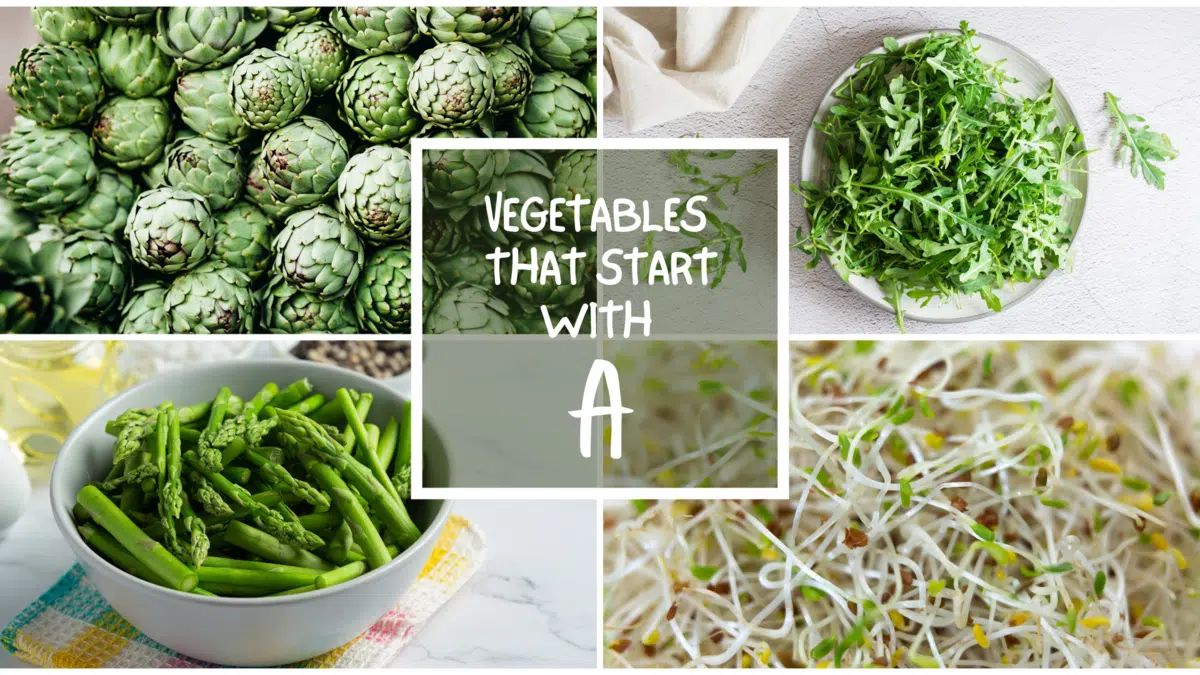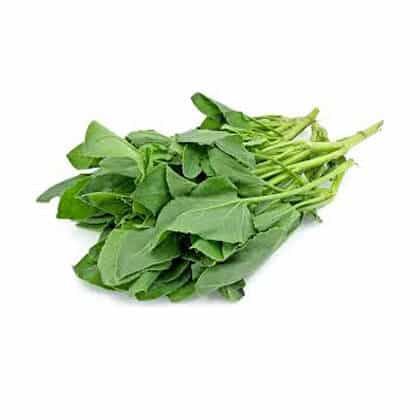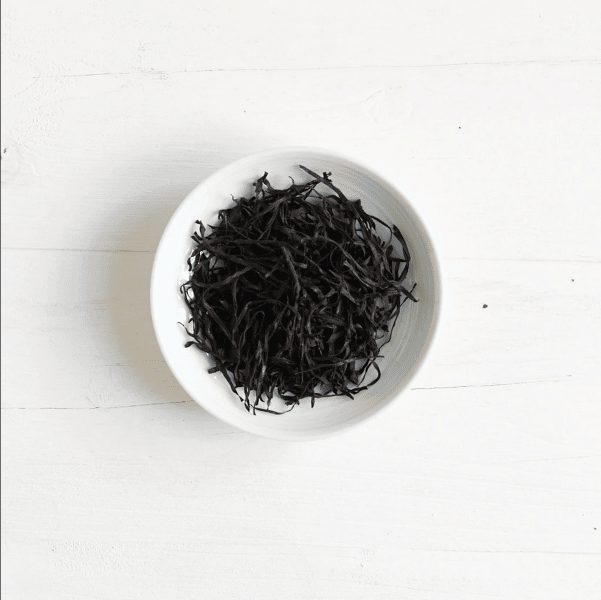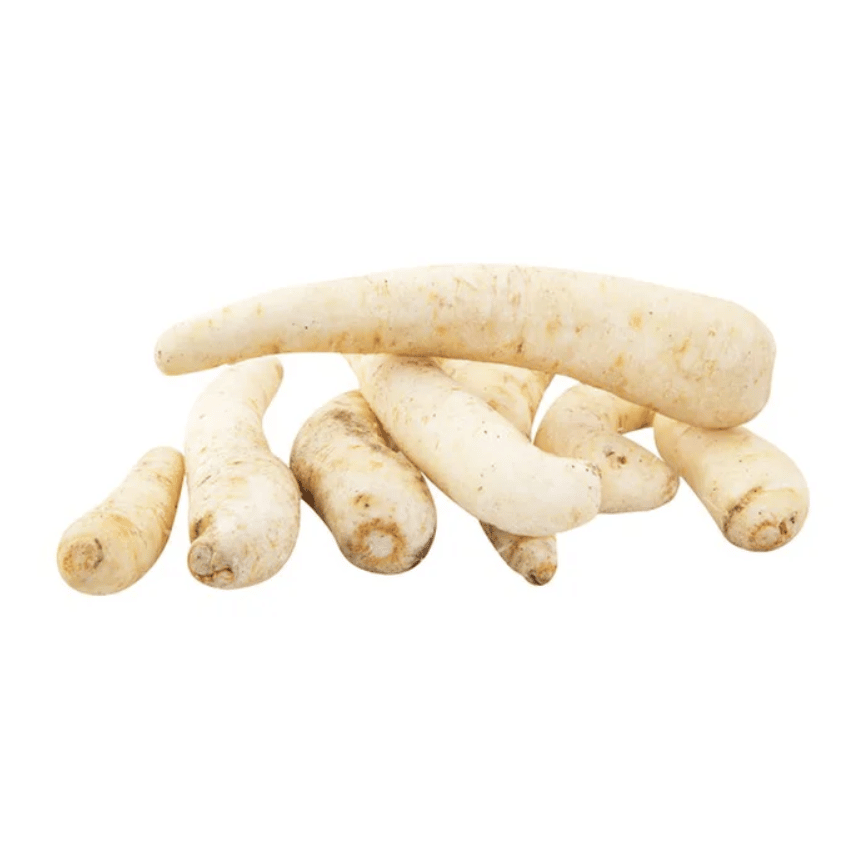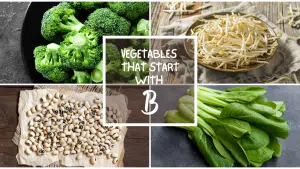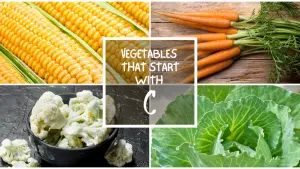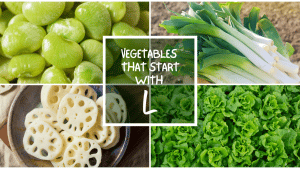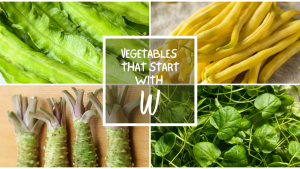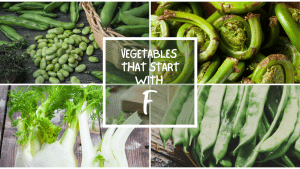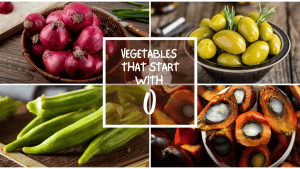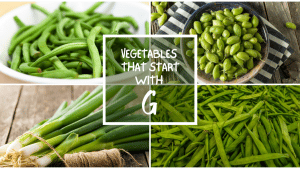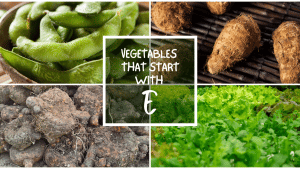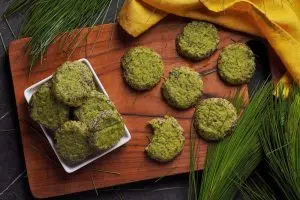All The Vegetables That Start With A
Important Note: When you buy through our links, we may earn a commission. As an Amazon Associate we earn from qualifying purchases. Content, pricing, offers and availability are subject to change at any time - more info.
Vegetables beginning with the letter A are multiple, starting from adzuki beans, acorn squash, arame, ambada, amaranth leaves, and alfalfa sprouts, among many others. This glossary is necessary for you to know the scientific name of the vegies, their taste, their smell, how you can eat them, and any recipes you can use them for. You need to know the list of vegetables beginning with the letter A, whether you enjoy eating healthy or are a horticulturalists, to be acquainted with a wide range of vegetables. Whether you are interested or obsessed with the letter A, here is an epic list of all the vegetables that start with the letter A.
- Acorn Squash
- Adzuki Beans
- Alfalfa Sprouts
- Amaranth Leaves
- Ambada
- Aonori
- Arame
- Arracacha
- Artichokes
- Arugula
- Asparagus
- Agathi
- Ash Gourd
- Arrowroot
- Ahipa
- The Final Letter
Acorn Squash
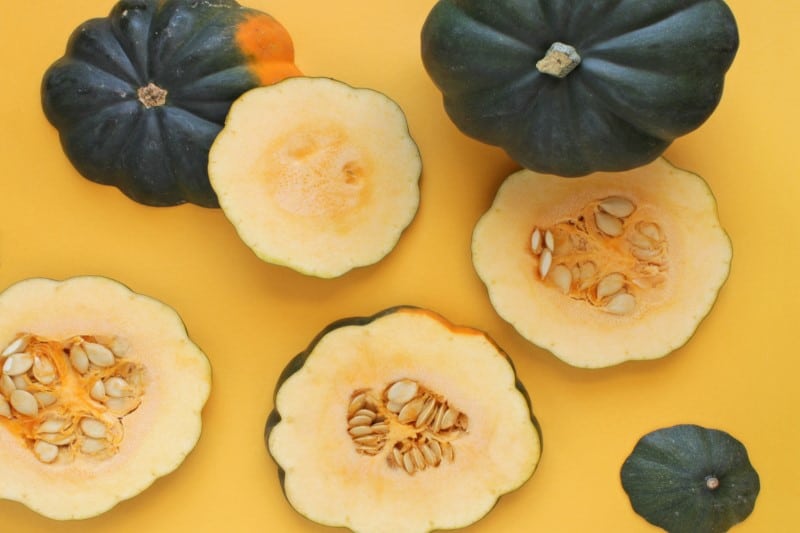
The scientific name of acorn squash is Cucurbita pepo ssp. Ovifera. This vegetable is a winter squash native to central and north America. Other names for acorn squash are des Moines squash and pepper squash. It is large with an acorn-like teardrop shape. Acorn squash looks like a pumpkin that is dark green. It has fluted sides in its round shape. Its color is dark green with deep ridges. The flavor of acorn squash is mild and slightly nutty. Its flavor is savory and sweet at the same time. After you bake, boil, or sauté it, you can eat this vegetable.
Botanically, acorn squash is classified as a fruit, but people eat it as a starchy vegetable and is consumed like the rest of the high-carb vegetables. Acorn squash nourishes during the winter season. You can easily identify them by their external ridges. Its cultivation is easy, and you can harvest them within 90 days of planting. It is prominent to backyard farmers because of how easy they grow.
If you store your acorn squash well, they can stay up to a month while still fresh. Thus, you can enjoy your acorn squash in seasons where other vegetables are scarce. Consuming acorn squash has potential health benefits for humans, such as protecting one from chronic illnesses like type 2 diabetes, bowel regularity, and health maintenance.
Adzuki Beans

The scientific name of adzuki beans is Vigna angularis. It belongs to the Fabaceae family. Other names for adzuki beans are red beans, atsuki, aduki, and azuki. The beans are small and red. It originated in China and has grown to be popular in Asian dishes. Adzuki beans are popularly grown in countries in the east of Asia and the Himalayas. After being sweetened, you can enjoy your adzuki beans as an ingredient in stews, soup, or desserts. The adzuki beans are boiled in sugar to make a red bean paste to make dessert. The adzuki bean paste is used as an ingredient to make dessert recipes in Asian countries, such as the mooncakes.
Consumers of adzuki beans enjoy potential health benefits such as improving the digestive mechanism, reducing the possibility of one gaining weight, and reducing the effects of type two diabetes.
Alfalfa Sprouts
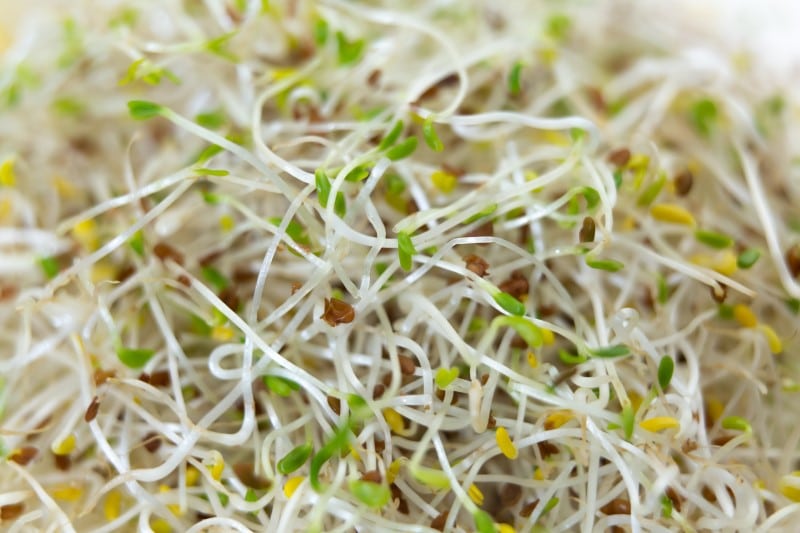
The scientific name of alfalfa sprouts is Medicago sativa L. The vegetable is the young plant shoots. You can use the alfalfa sprouts as an ingredient to make stir-frys or sandwiches. The alfalfa sprouts are stringy plants that are considered legumes. Other names for alfalfa sprouts are lucerne and queen of forages. It gets the name queen of forages because it is the most valued forage in several regions, has high yields, and is of high quality. Alfalfa sprouts are mostly grown from southern Canada through eastern china up to south Africa. America and Argentina are the two largest alfalfa sprouts producing countries.
Amaranth Leaves
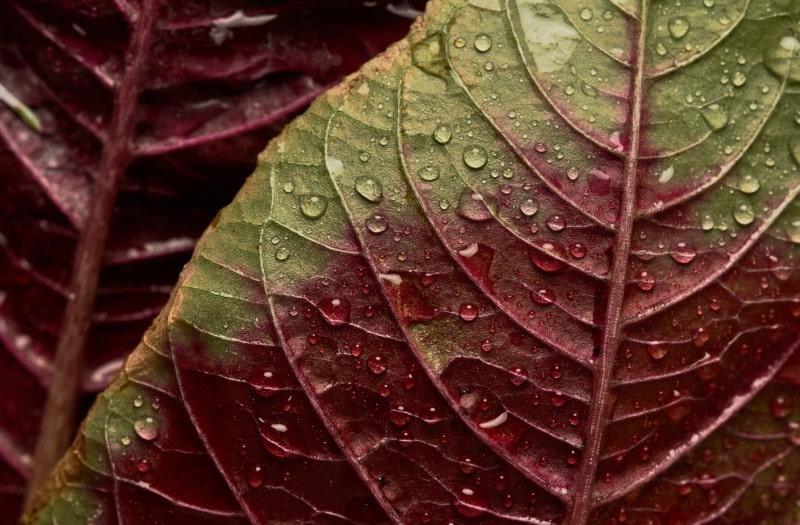
The scientific name of amaranth leaves is Amaranthus. Amaranth leaves belong to the Amaranthaceae family. It is a leafy green with beautiful purple streaks on them. Amaranth leaves are common in Chinese markets. It is also known as grain. You can enjoy the young amaranth leaves raw in salads or use them as an ingredient in soups and stir-fries. Although amaranth leaves have a short life span, they are a rich source of minerals and multiple proteins. The vegetable has been proven to have potential health benefits to its consumers, such as helping in the development of the human growth system, recovery of damaged cells, and performing anti-inflammatory activities.
The veggies are also used as a decoration plant because of their gorgeous magenta flowers. Amaranth leaves have an earthy flavor. This edible plant grows well in tropical and subtropical climates. If you wish to purchase amaranth leaves in the united states, you can get them in local grocery stores and a few online market shops.
Ambada
The scientific name of ambada is spondias dulcis. Other names for ambada are gongura, pulicha keerai, red sorrel, and pitwaa. The vegetables are flat, broad, and medium-sized. The vegetable has a tart and sour taste. Ambada is popularly grown in India. You can serve your ambada vegetable steamed or pickled, or you can ground it to form a paste to make chutney. Ambada is a primary ingredient in Andhra cuisine.
Aonori
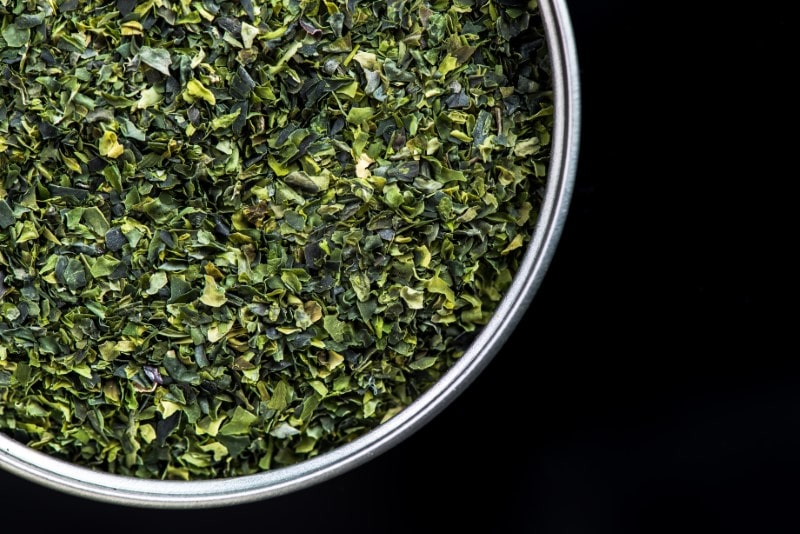
The scientific name of aonori is Palmaria palmate. The aonori vegetable is native to Taiwan and Japan. It is grown in coastal areas for commercial purposes. Aonori is a green seaweed that is edible. It is also known as sea cabbage, parade, aosa, and green laver. The vegetable is mostly sold powdered or dried. It resembles nori but has a milder flavor. The powdered aonori is used as a topping in many delicacies. It has a full flavor that has made it popularly used as an ingredient in Japanese dishes.
Aonori is rich in lithium, amino acids, magnesium, calcium, and vitamins. Intake of aonori has a few health benefits to humans, such as having anti-diabetic effects.
Arame
The scientific name of arame is Eisenia bicycles. Arame is a marine algae that is eaten as a vegetable. This sea oak belongs to the kelp seaweed species. This vegetable is grown seasonally in several Asian countries. Arame is commonly used in Japanese cuisine.
The vegetable is often sold after being dried. The dried arame has a firm texture and contains brown strands. It usually reconstitutes in a few minutes and has a mild sweet taste. Its semi-sweet taste reconstitutes very fast if it gets in contact with water. You can enjoy the arame vegetable with brown rice.
If you wish to purchase arame, you can find it in grocery stores and super shops in their dried form. Consuming arame has potential health benefits such as performing anti-obesity, anti-diabetic, and anti-inflammatory activities.
Arracacha
The scientific name of arracacha is Arracacia xanthorrhiza . It is also known as racacha in spain, virrava, white carrot, batata fiuza, yellow cassava, and apio criolllo. Arracacha is a starchy taproot vegetable like potatoes. The root vegetable is a cross between a celery root and carrot.
It is native to the Andes in South America and is grown as a commercial plant. Its taste is a blend of cabbage, roasted chestnuts, and celery. You can choose to eat raw or cook it either boiled, whipped, or mashed. You can use it as an ingredient in recipes such as gnocchi, pastry, and dumplings.
The arracacha vegetables are mostly planted for commercial reasons since the 1960s. The vegetable takes longer to mature and is prone to many plant diseases. It can be grown with other crops like beans, coffee, and maize. The arracacha vegetable resembles parsley, and its color ranges from purple to dark green. Paracha has roots that look like short and fat carrots with white skin. Its interior has colors varying from purple and yellow or white. Arracacha has brilliant colors depending on its variety.
Arracacha matures slowly for about 12 months and is susceptible to viruses, although it needs less fertilizer. The vegetable has a short shelf life of less than a week. However, they can stay in the refrigerator for approximately three weeks and still look fresh. The arracacha roots can be enjoyed raw or cooked to offer a unique aroma and flavor. Its small size makes it easy to digest, thus is highly recommended for small children and babies. Be keen not to take the arracacha vegetables excessively as it can cause harm such as yellowing of your skin.
Artichokes
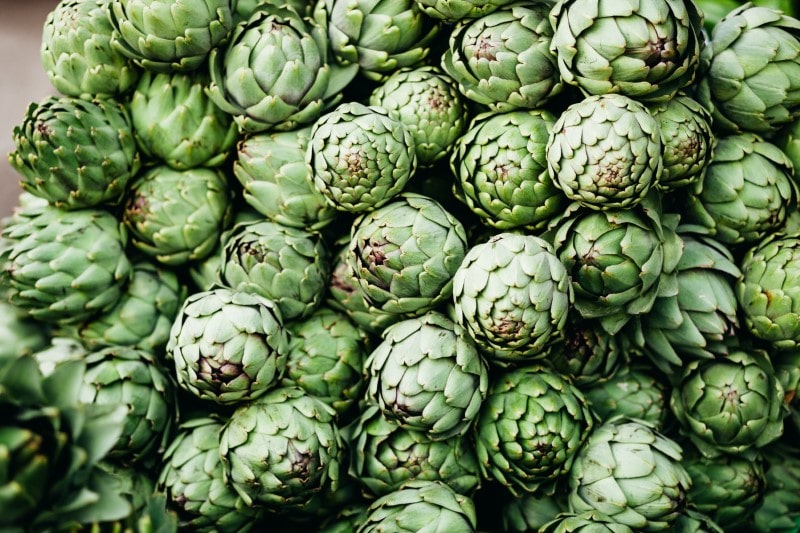
The scientific name of artichokes is Cynara cardunculus var. scolymus. The vegetable is found in the daisy family and is an immature flower bud. Before you enjoy artichokes, you can boil them or steam them. Artichoke has the shape of a bulb. The artichoke has a delicate and tasty flavor. Its flavor is pleasantly fresh and with a tender taste that has a touch of lemon. If you want to purchase artichokes, you can easily find them in many grocery stores, preserved in oil or canned. Artichoke has leaves formed in layers surrounding it. The innermost leaves are tough, and to eat the tender parts, you need to scrape them off using your teeth.
To grow the artichoke plant, you need land well supplied with water and fertile. Artichoke has many nutrients such as fiber, vitamin C, and vitamin K. Artichoke, like most vegetables, has an earthly taste. The flavor is not so strong. However, if you consume it unseasoned, it tastes similar to fried egg whites. You can enjoy artichokes after you boil, stuff, or bake them.
When shopping for artichokes, pick the ones that are heavier, produce a squeaky sound when squeezed, and have closed leaves. To purchase artichokes in the united states, you can get them fresh at natural food stores and the canned ones in whole food supermarkets.
Arugula

The scientific name of arugula is Eruca vesicaria ssp. Sativa. Other names for arugula vegetables are Rocca, roquette, and garden rocket. Arugula is a leafy and cruciferous vegetable. It belongs to the mustard or Brassicaceae family. Arugula is in the same family as Brussels sprouts, kale, and broccoli. The vegetable is tender and has a tangy flavor. The fresh peppery flavor of an arugula vegetable is often enjoyed in pizza, sauces, and salads. You can enjoy its spicy flavor when you add peppery and leafy vegetables to salads.
The vegetable thrives in areas with a temperate climate. It is a rich source of nutrients like vitamin C, vitamin K, vitamin B, potassium, magnesium, and beta-carotene. Argula veggies are commonly used across France and Italy.
Consuming arugula has potential health benefits for humans, such as lowering blood pressure, anti-oxidant activities, and lowering the quantity of oxygen you need when exercising.
This vegetable is more tender than swiss card and spinach and will lend your dish more flavor. You can easily grow arugula in a windowsill garden. Arugula has a short life span and should be stored in a refrigerator and consumed within a few days.
Asparagus

The scientific name of asparagus is Asparagus Officinalis. Other names for asparagus are sparrow grass and garden asparagus. It belongs to the lily family. Asparagus is a common vegetable starting with the letter A you might have already interacted with. It is also known as jhijhirkani and kurilo. This vegetable is a stem vegetable that grows long and is pointy. Asparagus has the shape of a spear. It has a range of colors; it can be purple, white, or green, which is the most common. To enjoy your asparagus, you can steam, grill, roast, or sauté it. You can also use it as a side dish for pasta, beef, or shrimp. You can enjoy your asparagus raw by eating it as a salad.
The asparagus plant can have a life span of up to 30 years. Asparagus is a rich source of vitamin B, protein, fiber, folic acid, iron, and folate. However, the asparagus plant produces a poisonous fruit that can make one vomit or have diarrhea. It contains high levels of amino acids that assist in healing urinary tract infections. It also performs anti-oxidant activities and cures liver disease.
The vegetable can be bought in grocery stores arranged in rubber-banded bundles. Asparagus is native to the western coasts of Europe, from Germany, Great Britain, and Spain. The part of the asparagus that is commonly eaten is the shoot. To know the age of the asparagus plant, you can learn it through its stem. The thicker the stem of asparagus, the older it is. The vegetable is commonly sold in open-air markets and roadside stands.
Agathi
The scientific name of agathi is sesbania grandiflora. It is found in the Fabaceae family. Agathi is a term originating from Tamil that means vegetable hummingbird. The Agathi tree is a small tree that grows rapidly if exposed to adequate amounts of sun. It produces white flowers. Agathi is also a vegetable hummingbird, avisa, agase, so dua, Paloma, and agathi keerai. Agathi nourishes in hot, humid climates. It is native to Malaysia, Indonesia, Mexico, India, and parts of America. The flowers of an agathi plant are consumed as vegetables. They can be either green or red. The green ones are preferred because they are less bitter, while the red ones have more nutritious values. It is a source of nutritional values like calcium, phosphorus, thiamin, selenium, magnesium, and vitamin A.
Consuming any part of the agathi plant has potential health benefits such as treating inflammatory diseases, performing anti-oxidant activities, and dysentery microbial infections. Agathi has an astringent and bitter taste. Its leaves have a crunchy and fibrous texture. To reduce bitterness while cooking agathi, you can remove the stamen and calyx. Also, be keen not to consume too much agathi as it can cause stomach upset.
Ash Gourd
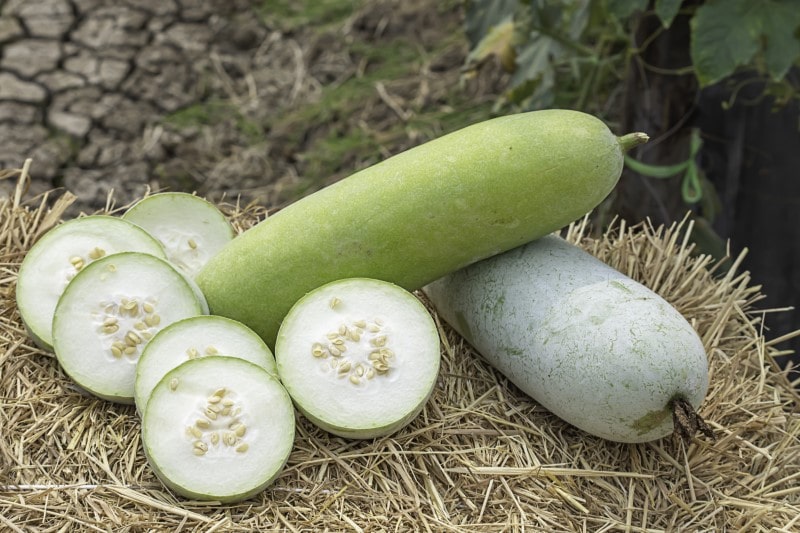
The scientific name of ash gourd is benincasa hispida. Other names for ash gourd are white pumpkin, winter melon, Chinese watermelon, and wax gourd. It is native to South Asia. You can recognize it from its fine hair while it is still young. However, it loses the hair as it matures, and its skin becomes waxy. Ash gourd nourishes well in warm and sandy soil. It is also prone to frosts. Ash gourd has a taste similar to cucumber and is popularly used as an ingredient in Indian and Chinese dishes. It is a rich source of nutrients like fiber, vitamin C, fat, zinc, and riboflavin. You can eat ash gourd raw like cucumber, cube it, fry it, or boil it. Ash gourd can be used as an ingredient to make ketchup, ice cream, or candy. You can find them in some supermarkets and international farmers’ markets. Go for the heavy ones with very few indentations to pick the best ash gourds.
Arrowroot
Yes. Arrowroot is a vegetable beginning with the letter A. The scientific name of arrowroot is Maranta arundinacea. It is also known as artault. Arrowroot is a root and tuber at the same time. It is usually sold in powder form. The vegetable is used in baking recipes after being blended into flour or as a thickener. Powder made from arrowroots has paleo and is free from gluten and grain; thus is often used for special diets.
Arrowroot offers its consumers nutrients such as copper and iron. Taking in arrowroots is proven to have health benefits such as treating diarrhea and boosting your immune system to keep track of your weight. Arrowroots are mostly grown in the Caribbean. You can use arrowroots as an ingredient to make cake, pudding, and tea. Arrowroots grew their popularity during the victorian and napoleon period.
Ahipa
The scientific name of ahipa is Pachyrhizus ahipa. Another name for ahipa vegetables is the Andean yam bean. It is considered a vegetable because of its culinary sense. To harvest ahipa takes about ten months after planting. It commonly grows in tropical regions. The ahipa plant is susceptible to pests but not so much to viruses.
The Final Letter
Enjoy this extensive list of vegetables beginning with the letter A. The above glossary will assist create a diverse garden and one that can meet your daily nutritional needs. Using the above list of vegetables beginning with the letter A, you will be able to have a healthy diet while at the same time trying out new and tasty flavors that will make the eating of vegetables much more interesting.
